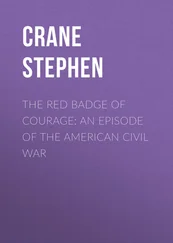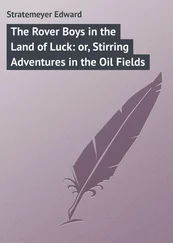Stephen Fry - The Ode Less Travelled - Unlocking The Poet Within
Здесь есть возможность читать онлайн «Stephen Fry - The Ode Less Travelled - Unlocking The Poet Within» весь текст электронной книги совершенно бесплатно (целиком полную версию без сокращений). В некоторых случаях можно слушать аудио, скачать через торрент в формате fb2 и присутствует краткое содержание. Жанр: Старинная литература, на английском языке. Описание произведения, (предисловие) а так же отзывы посетителей доступны на портале библиотеки ЛибКат.
- Название:The Ode Less Travelled: Unlocking The Poet Within
- Автор:
- Жанр:
- Год:неизвестен
- ISBN:нет данных
- Рейтинг книги:3 / 5. Голосов: 1
-
Избранное:Добавить в избранное
- Отзывы:
-
Ваша оценка:
- 60
- 1
- 2
- 3
- 4
- 5
The Ode Less Travelled: Unlocking The Poet Within: краткое содержание, описание и аннотация
Предлагаем к чтению аннотацию, описание, краткое содержание или предисловие (зависит от того, что написал сам автор книги «The Ode Less Travelled: Unlocking The Poet Within»). Если вы не нашли необходимую информацию о книге — напишите в комментариях, мы постараемся отыскать её.
The Ode Less Travelled: Unlocking The Poet Within — читать онлайн бесплатно полную книгу (весь текст) целиком
Ниже представлен текст книги, разбитый по страницам. Система сохранения места последней прочитанной страницы, позволяет с удобством читать онлайн бесплатно книгу «The Ode Less Travelled: Unlocking The Poet Within», без необходимости каждый раз заново искать на чём Вы остановились. Поставьте закладку, и сможете в любой момент перейти на страницу, на которой закончили чтение.
Интервал:
Закладка:
There are, to my mind, two aesthetics available when faced by the howling, formless, uncertain, relative and morally contingent winds that buffet us today. One is to provide verse of like formlessness and uncertainty, another is (perhaps with conscious irony) to erect a structured shelter of form. Form is not necessarily a denial of the world’s loss of faith and structure, it is by no means of necessity a nostalgic evasion. It can be, as we shall see, a defiant, playful and wholly modern response.
Looking back over the last few paragraphs I am aware that you might think me a dreadful, hidebound old dinosaur. I assure you I am not. I am uncertain why I should feel the need to prove this, but I do want you to understand that I am far from contemptuous of Modernism and free verse, the experimental and the avant-garde or of the poetry of the streets. Whitman, Cummings, O’Hara, Wyndham Lewis, Eliot, Jandl, Olsen, Ginsberg, Pound and Zephaniah are poets that have given me, and continue to give me, immense pleasure. I do not despise free verse. Read this:
Post coitum omne animal triste
i see you
!
you come
closer
improvident
with your coming
then–
stretched to scratch
–is it a trick of the light?–
i see you
worlded with pain
but of
necessity not
weeping
cigaretted and drinked
loaded against yourself
you seem so yes bold
irreducible
but nuded and afterloved
you are not so strong
are you
?
after all
There’s the problem. The above is precisely the kind of worthless arse-dribble I am forced to read whenever I agree to judge a poetry competition. 2It took me under a minute and a half to write and while I dare say you can see what utter wank it is, there are many who would accept it as poetry. All the clichés are there, pointless lineation, meaningless punctuation and presentation, fatuous creations of new verbs ‘cigaretted and drinked’, ‘worlded’, ‘nuded’, ‘afterloved’, 3a posy Latin title–every pathology is presented. Like so much of what passes for poetry today it is also listless , utterly drained of energy and drive–a common problem with much contemporary art but an especial problem with poetry that chooses to close itself off from all metrical pattern and form. It is like music without beat or shape or harmony: not music at all, in fact. ‘Writing free verse is like playing tennis with the net down,’ Robert Frost wrote. Not much of a game at all, really.
My ‘poem’ is also pretentious, pretentious in exactly the way much hotel cooking is pretentious–aping the modes of seriously innovative culinary artists and trusting that the punters will be fooled. Ooh, it’s got a lavender reduction and a sorrel jus: it’s a pavane of mullet with an infusion of green tea and papaya. Bollocks, give me steak and kidney pudding. Real haute cuisine is created by those who know what they are doing. Learning metre and form and other such techniques is the equivalent of understanding culinary ingredients, how they are grown, how they are prepared, how they taste, how they combine: then and only then is one fit to experiment with new forms. It begins with love, an absolute love of eating and of the grain and particularity of food. It is first expressed in the drudgery of chopping onions and preparing the daily stockpots, in the commitment to work and concentration. They won’t let you loose on anything more creative until you have served this apprenticeship. I venerate great chefs like Heston Blumenthal, Richard Corrigan and Gordon Ramsay: they are the real thing, they have done the work–work of an intensity most of us would baulk at. Of course some people think that they, Blumenthal, Corrigan et al., are pretentious, but here such thinking derives from a fundamental ignorance and fear. So much easier to say that everything you fail to understand is pretentious than to learn to discriminate between the authentic and the fraudulent. Between lazy indiscipline and frozen traditionalism there lies a thrilling space where the living, the fresh and the new may be discovered.
Fortunately, practising metre and verse forms is not as laborious, repetitive and frightening as toiling in a kitchen under the eye of a tyrannical chef. But we should never forget that poetry, like cooking, derives from love, an absolute love for the particularity and grain of ingredients–in our case, words.
So, rant over: let us acquaint ourselves with some of the poetic forms that have developed and evolved over the centuries.
The most elemental way in which lineation can be taken forward is through the collection of lines into STANZA FORM: let us look at some options.
II
Stanzaic Variations
O PEN F ORMS
Tercets, quatrains and other stanzas – terza rima–ottava rima–rhyme royal–ruba’iyat–the Spenserian stanza
A TERCET is a stanza of three lines, QUATRAINS come in fours, CINQUAINS in fives, SIXAINS in sixes. That much is obvious. There are however specific formal requirements for ‘proper’ cinquains or sixains written in the French manner. There is, for example, a sixain form more commonly called the sestina , which we will examine in a separate section. Forms which follow a set pattern are called closed forms : the haiku, limerick and sonnet would be examples of single-stanza closed forms. Forms which leave the overall length of a poem up to the poet are called open forms .
Terza Rima
Tercets, three-line stanzas, can be independent entities rhyming aba cdc and so on, or they might demand a special kind of interlocking scheme such as can be found in TERZA RIMA, the form in which Dante wrote Inferno, Purgatorio and Paradiso .The TERZA RIMA mode is very fine,Great Dante used it for his famous text;It rhymes the words in every other lineWith each thought drawing you towards the next: A-B-A, B-C-B, C-D-C-D… This middle rhyme is sequently annexedTo form the outer rhymes of Stanza ThreeAnd thus we make an interlocking rhyme :This subtle trick explains, at least to me,Just why this form has stood the test of time.
As you can see, this linked rhyming can go on for ever, the middle line of each stanza forming the outer rhymes of the one that follows it. When you come to the end of a thought, thread or section, you add a fourth line to that stanza and use up the rhyme that would otherwise have gone with the next. I have done this with ‘rhyme’ and appended the (indented) stop-line ‘Just why this form has stood the test of time’. A young Hopkins used a stop- couplet to end his early terza rima poem, ‘Winter with the Gulf Stream’:I see long reefs of violetsIn beryl-covered ferns so dim,A gold-water Pactolus fretsIts brindled wharves and yellow brim,The waxen colours weep and run,And slendering to his burning rimInto the flat blue mist the sunDrops out and the day is done.
Chaucer, under Dante’s influence, wrote the first English terza rima poem, ‘A Complaint to his Lady’, but the best-known example in English is probably Shelley’s ‘Ode to the West Wind’:Drive my dead thoughts over the universe,Like wither’d leaves, to quicken a new birth;And, by the incantation of this verse,Scatter, as from an unextinguish’d hearthAshes and sparks, my words among mankind!Be through my lips to unawaken’d earthThe trumpet of a prophecy! O Wind,If Winter comes, can Spring be far behind?
It does not matter how you lay out your verse (Shelley used five fourteen-line stanzas) or in what metre (Hopkins wrote in iambic tetrameter and Shelley in pentameter): it is the rhyme-scheme that defines the form.
Читать дальшеИнтервал:
Закладка:
Похожие книги на «The Ode Less Travelled: Unlocking The Poet Within»
Представляем Вашему вниманию похожие книги на «The Ode Less Travelled: Unlocking The Poet Within» списком для выбора. Мы отобрали схожую по названию и смыслу литературу в надежде предоставить читателям больше вариантов отыскать новые, интересные, ещё непрочитанные произведения.
Обсуждение, отзывы о книге «The Ode Less Travelled: Unlocking The Poet Within» и просто собственные мнения читателей. Оставьте ваши комментарии, напишите, что Вы думаете о произведении, его смысле или главных героях. Укажите что конкретно понравилось, а что нет, и почему Вы так считаете.










